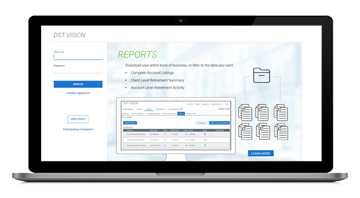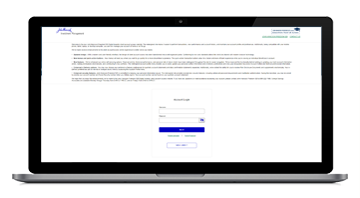What are the key risks bond investors should watch out for?
Within a multi-asset portfolio, bonds are often seen as the ballast, making them a potentially attractive choice for investors who prioritize capital preservation. However, different types of bond investment risk exist, affecting various sectors of the global bond market in unique ways.

Understanding interest rate risk
Interest rate risk influences all fixed-income investments to some degree, although its impact varies based on a bond’s duration. At its core, this risk reflects the inverse relationship between interest rates and bond prices.
When interest rates climb, newly issued bonds with higher yields look more attractive relative to existing bonds with lower yields, causing their prices to drop. Conversely, when rates decline, the value of existing bonds can soar as their higher yields suddenly appear more attractive in a lower-rate environment.
Falling yields can lead to significant price appreciation for existing bonds
This risk can cause significant price fluctuations, particularly in markets where rates are volatile. Bonds with longer durations are generally more sensitive to interest rate changes, which means they typically experience larger price swings than do short duration bonds when interest rates fluctuate.
Credit risk in bond investing
Credit risk is another key consideration in fixed income, relating to the bond issuer’s ability to fulfill its financial obligations to bondholders. This risk reflects the possibility that an issuer might experience a downgrade in its credit rating or even default on its debt, events that typically result in a drop in the bond’s price.
Bonds are classified as either investment grade or high yield based on their credit ratings. High-yield bond issuers are considered less creditworthy and carry a higher likelihood of default compared to investment-grade bonds. However, they tend to offer wider spreads relative to U.S. Treasuries, offering higher yields to compensate investors for the increased credit risk.
In contrast, investment-grade or high-quality bonds include those issued by governments, government agencies, or large, well-established corporations. They’re generally deemed more reliable but tend to provide lower yields due to their perceived stability and lower credit risk.
High-yield bonds offer higher spreads due to their elevated credit risk
During economic downturns or risk-off periods in the market, bonds with higher credit risk may experience widening spreads, negatively affecting their prices. At the other end of the spectrum, high-quality bonds typically exhibit lower price volatility during such periods. Investors should carefully assess the credit quality of potential bond investments, weighing the appeal of higher yields against the increased risk when constructing a bond portfolio.
Balancing inflation risk and reinvestment risk
Inflation risk is the threat that rising prices will erode the purchasing power of money over time. This risk is particularly significant for bonds with fixed-rate coupons, as inflation can gradually chip away at the real value of these interest payments. Long-term bonds are especially vulnerable to inflation risk because their fixed payments extend over many years or even decades, making them more susceptible to the effects of inflation.
Conversely, reinvestment risk can be a concern for bond investors in a declining interest rate environment. This risk affects any bond where the proceeds from either the maturing principal or coupon payments must be reinvested at potentially lower rates, reducing the yield generated from new investments. Short-term bonds are more exposed to this risk as they mature sooner and require frequent reinvestment decisions.
Balancing these two risks is an important consideration when deciding how to build a fixed-income portfolio. Investors should consider the current and projected interest rate environment, adjusting their duration strategy to align with their investment goals and time horizon, and seeking to find a balance that preserves both income and purchasing power.
Mitigating liquidity risk with mutual funds or ETFs
Liquidity risk refers to the possibility that investors might encounter difficulty selling a bond quickly at their desired price. This risk arises when there is a lack of buyers or limited market activity for a particular type of bond, potentially forcing the seller to hold onto the bond or accept a lower price than expected.
This risk is elevated for investors who choose to invest in individual bonds. While certain areas of the market, such as Treasury bonds, are typically highly liquid, areas such as municipal or high-yield bonds may experience lower trading volumes. Additionally, liquidity can fall sharply during periods of market stress, further complicating the ability to sell bonds at favorable prices.
One way that investors can mitigate this risk is by using fixed-income mutual funds or ETFs. Although the fund manager must navigate these liquidity challenges, end investors maintain the flexibility to easily buy and sell their shares in the fund, benefiting from the fund’s overall liquidity.
Additionally, funds and ETFs often have access to a wider array of bonds than individual investors, potentially enhancing liquidity even during market turbulence. This approach allows investors to maintain broad exposure to the bond market while managing the liquidity risk associated with individual bonds.
Managing bond investment risks with active management
To effectively manage the risks inherent in fixed-income investing, investors should consider opting for actively managed bond funds over passive funds. These funds can leverage the expertise and flexibility of their portfolio management teams, adjusting the portfolio in response to changing market conditions.
Active managers can help manage the risk profile of bond funds by shifting the portfolio based on their outlook for monetary policy, the yield curve, and economic trends. With the support of dedicated research teams, these managers strive to reduce credit risk by selecting bonds from strong, well-capitalized issuers. They also build diversified portfolios, which can help limit exposure to various risks and enhance the fund's resilience.
For example, an actively managed fund might respond to the slowing labor market by tilting toward higher-quality bonds that are better positioned to withstand an economic slowdown or recession. These managers can also access specialized areas of the market, such as 144A securities, which are available only to qualified institutional buyers. This ability could allow them to tap into unique yield and return opportunities that aren't widely accessible, potentially enhancing the fund's performance.
Want to learn more about how to optimize your bond allocation? Listen to our Portfolio Intelligence podcast, where we explore what investors should know when it comes to understanding the fixed-income landscape.
Important disclosures
Important disclosures
This material is for informational purposes only and is not intended to be, nor shall it be interpreted or construed as, a recommendation or providing advice, impartial or otherwise. John Hancock Investment Management and our representatives and affiliates may receive compensation derived from the sale of and/or from any investment made in our products and services.
The opinions expressed are those of the author(s) and are subject to change as market and other conditions warrant. No forecasts are guaranteed. Past performance does not guarantee future results. This commentary is provided for informational purposes only and is not an endorsement of any security, mutual fund, sector, or index.
Investing involves risks, including the potential loss of principal. These products carry many individual risks, including some that are unique to each fund. Fixed-income investments are subject to interest-rate and credit risk; their value will normally decline as interest rates rise or if an issuer is unable or unwilling to make principal or interest payments. Investments in higher-yielding, lower-rated securities include a higher risk of default.
MF4762179





